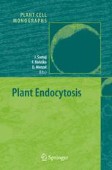Search
Filters applied:
Search Results
-
Senescence and Cell Cycle Control
In response to various stresses, such as telomere shortening during continuous proliferation, oxidative stress, DNA damage and aberrant oncogene...
-
Telomeres in fungi
Telomeres are the functional elements concluding and defining each linear chromosome in eukaryotes. They play an essential role in protecting genetic...
-
Systems Biology: necessary developments and trends
At the end of this definition of Systems Biology through exampling, we discuss ambitions, goals, and challenges relating to this new discipline. We...
-
Control of Cell Proliferation and Growth by Myc Proteins
Myc proteins act as signal transducers that alter cell proliferation in dependence on signals from the extracellular environment. In normal cells,...
-
Comparative genomics and gene finding in fungi -- Supplement
Online Supplement to Chapter 1
-
Regulation of the heat shock response by heat shock transcription factors
The heat shock response is characterized by a rapid and robust increase in heat shock proteins upon exposure to protein-damaging stresses. This...
-
The genome of the filamentous fungus Ashbya gossypii: annotation and evolutionary implications
The 9.2 Mb genome of the filamentous fungus Ashbya gossypii consists of seven chromosomes carrying 4718 protein coding genes, 194 tRNA genes, at...
-
Template-induced protein misfolding underlying prion diseases
Proteins with prion properties are closely associated to a class of fatal neurodegenerative illnesses in mammals and to the emergence and propagation...
-
Methods and Molecular Tools for Studying Endocytosis in Plants---an Overview
Proteins of the endocytosis machinery in plants, such as clathrin and adaptor proteins, were isolated and characterized using combinations of...
-
Tip Growth and Endocytosis in Fungi
Recent advances in molecular cell biology have provided new insights into different cellular processes that all turn out to contribute to...
-
1 Phospholipid synthesis in mammalian cells
Phospholipids are the main components of biological membranes and as such act as the major permeability barrier between cells and the extracellular...
-
2 Phospholipid synthesis and dynamics in plant cells
Phospholipids represent the second family of lipids after the galactolipids in photosynthetic tissues and the first in non-photosynthetic tissues....
-
11 Plant sphingolipids
Plants contain a multiplicity of sphingolipid metabolites, such as long-chain bases, long-chain base phosphates, ceramides, glycosylceramides,...
-
12 Baker’s Yeast: a rising foundation for eukaryotic sphingolipid-mediated cell signaling
Saccharomyces cerevisiae has been an invaluable tool for the dissection of sphingolipid metabolic pathways and cloning of enzymes involved in...
-
5 Sterol metabolism and functions in higher plants
Higher plants synthesize a bewildering array of sterols, with sitosterol, stigmasterol, and 24-methylcholesterol as major compounds. All plant...
-
6 Sterol biochemistry and regulation in the yeast Saccharomyces cerevisiae
Saccharomyces cerevisiae has been a major model system for the study of sterol biosynthesis and function. All of the genes encoding the enzymes...
-
7 Mammalian ACAT and DGAT2 gene families
Mammalian isozymes of ACAT, DGAT, and MGAT are encoded by the ACAT and DGAT2 gene families. These enzymes catalyze the synthesis of neutral lipid...
-
Regulation of IP 3 Receptors by IP 3 and Ca 2+
Inositol 1,4,5-trisphosphate ( IP 3) receptors are intracellular Ca 2+ channels that mediate release of Ca 2+ from intracellular stores. The channels...
-
Modeling Calcium Waves
We present an introduction to the mathematics of calcium waves, both intracellular and intercellular. After a discussion of the earlier models I...
-
Hormone-Mediated Intercellular Calcium Signalling in an Insect Salivary Gland – Pathways and Mechanisms
The salivary glands of the blowfly Calliphora vicina are a favourable preparation for investigations into spatio-temporal Ca 2+ dynamics in an intact...
